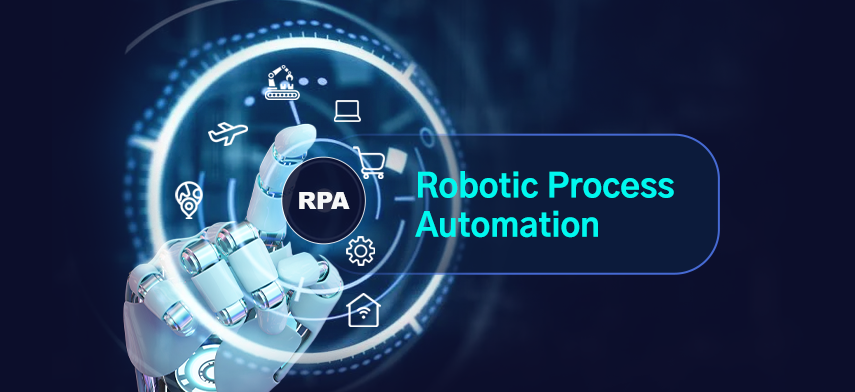In today’s rapidly evolving digital landscape, businesses are constantly seeking innovative ways to enhance efficiency, reduce costs, and improve productivity. One of the most transformative technologies driving this evolution is Robotic Process Automation (RPA). RPA involves the use of software bots or “robots” to automate repetitive, rule-based tasks traditionally performed by humans. By harnessing the power of RPA, organizations across various industries can streamline their operations, boost productivity, and achieve significant cost savings.
Understanding Robotic Process Automation (RPA)
Robotic Process Automation (RPA) is a cutting-edge technology that enables organizations to automate mundane, repetitive tasks using software bots. These bots are programmed to mimic human actions and interact with digital systems just like a human would, making them ideal for automating a wide range of routine processes. RPA software can perform tasks such as data entry, invoice processing, report generation, and customer service inquiries with speed and accuracy, freeing up valuable human resources to focus on more strategic and value-added activities.
The Benefits of RPA
Implementing RPA offers a myriad of benefits for businesses looking to optimize their operations:
Increased Efficiency: RPA bots can work 24/7 without breaks or errors, significantly reducing processing times and increasing overall efficiency.
Cost Savings: By automating repetitive tasks, organizations can reduce labor costs and reallocate resources to more high-value activities, resulting in substantial cost savings.
Improved Accuracy: RPA bots perform tasks with near-perfect accuracy, minimizing the risk of errors and ensuring data integrity.
Enhanced Scalability: RPA solutions are highly scalable and can adapt to changing business needs and volumes without significant investment in additional resources.
Better Compliance: RPA can help ensure compliance with regulations and standards by consistently following predefined rules and procedures.
Faster ROI: With quick implementation and tangible benefits, RPA typically offers a rapid return on investment (ROI) for organizations.
Use Cases of RPA
The versatility of RPA makes it applicable across a wide range of industries and business functions. Some common use cases include:
Finance and Accounting: Automating invoice processing, accounts payable/receivable, reconciliation, and financial reporting.
Human Resources: Streamlining employee onboarding, payroll processing, leave management, and performance reviews.
Customer Service: Automating email responses, chatbots, and ticket routing to improve customer satisfaction and response times.
Supply Chain Management: Optimizing order processing, inventory management, and supplier communication to ensure smooth operations.
Healthcare: Automating patient appointment scheduling, claims processing, and medical records management to enhance efficiency and accuracy.
Insurance: Accelerating claims processing, policy administration, underwriting, and compliance reporting to improve customer service and reduce costs.
Challenges and Considerations
While RPA offers numerous benefits, there are also challenges and considerations that organizations must address:
Complexity of Processes: Some processes may be too complex or dynamic for RPA bots to handle effectively, requiring careful analysis and design.
Integration with Legacy Systems: Integration with existing IT systems and legacy applications can be challenging and may require additional time and resources.
Data Security and Compliance: Organizations must ensure that sensitive data processed by RPA bots is adequately protected and compliant with relevant regulations.
Change Management: Implementing RPA may require cultural and organizational changes, including upskilling employees and redefining roles and responsibilities.
Maintenance and Monitoring: RPA bots require regular maintenance, monitoring, and updates to ensure optimal performance and reliability.
Future Trends in RPA
Looking ahead, several trends are shaping the future of RPA:
Artificial Intelligence (AI) Integration: RPA combined with AI technologies such as machine learning and natural language processing enables more intelligent automation and decision-making.
Hyperautomation: Hyperautomation involves the use of a combination of technologies, including RPA, AI, process mining, and analytics, to automate entire business processes end-to-end.
Cloud-Based RPA: Cloud-based RPA solutions offer greater scalability, flexibility, and accessibility, enabling organizations to deploy and manage automation initiatives more efficiently.
Robotics Process Mining: Process mining techniques can analyze digital footprints and identify areas for automation, making RPA implementation more targeted and effective.
Citizen Development: Empowering non-technical users to create and deploy automation solutions using low-code or no-code platforms democratizes RPA and accelerates its adoption across organizations.
Conclusion
Robotic Process Automation (RPA) is revolutionizing the way businesses operate by automating repetitive tasks, improving efficiency, and driving cost savings. By leveraging RPA technology, organizations can streamline their processes, enhance productivity, and gain a competitive edge in today’s fast-paced digital economy. While challenges exist, the benefits of RPA far outweigh the costs, making it a valuable investment for organizations seeking to optimize their operations and achieve long-term success. As RPA continues to evolve and integrate with other emerging technologies, its potential to transform businesses and drive innovation remains limitless.

